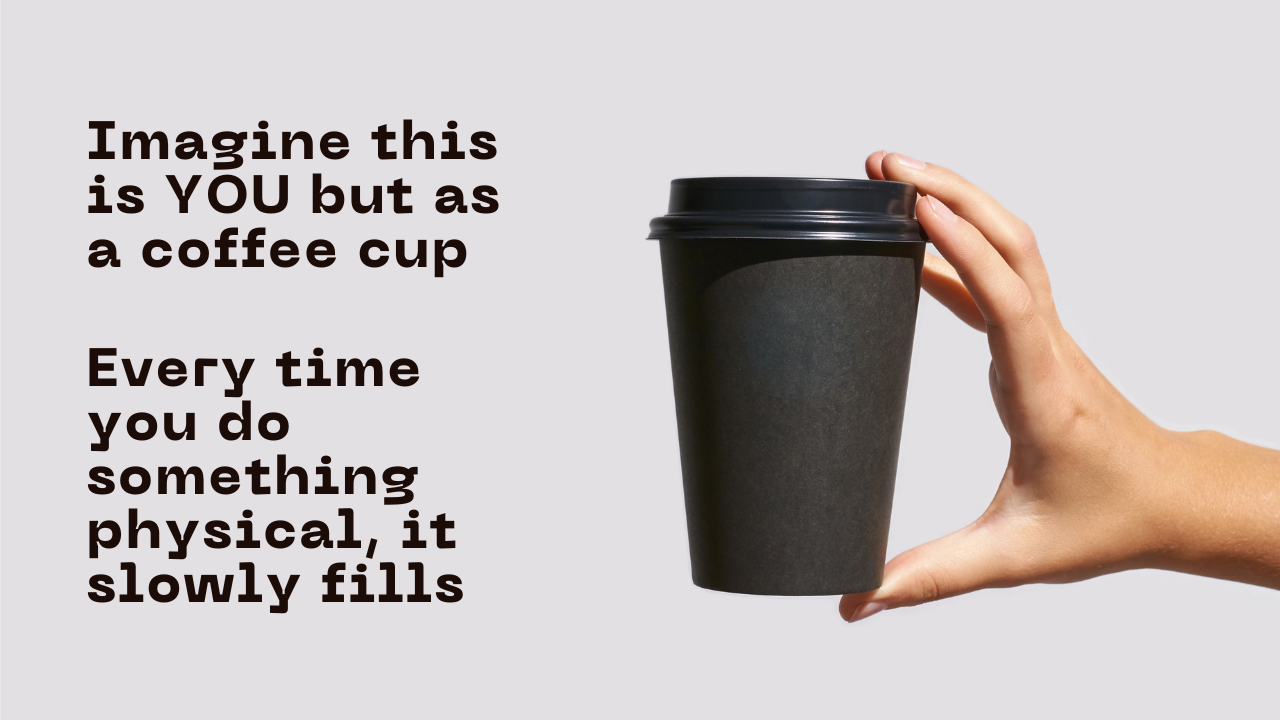
Your Coffee Cup Holds The Secret To Staying Injury-Free
Jun 14, 2023Read Time: 3.5 minutes
In this newsletter, we will use the analogy of a coffee cup to unpack the concept of 'Load vs. Capacity' - a simple yet transformative model that can revolutionize the way you approach your physical activities. This concept will be our guide as we journey through understanding why injuries happen and how to prevent them.

Understanding the 'Load vs. Capacity' concept matters as it holds the secret to staying injury-free. It matters because it can empower you to better manage your physical health, decode why injuries occur, and provide a roadmap to prevent them in the future. If you're someone who has experienced sudden injury or chronic pain, or if you're looking to optimize your physical performance, this will offer you invaluable insights.
Most people tend to underestimate the importance of understanding the 'Load vs. Capacity' model, leading to increased susceptibility to injuries. They either push their bodies beyond their capacity, or they fail to adequately build their capacity to handle the load. This common pitfall often results from a lack of knowledge about their body's true capacity and the demands they are placing on it.
If you consistently overload your body beyond its capacity, you're setting yourself up for injury. Understanding and respecting the balance between load and capacity is crucial to maintaining physical health and resilience.
Using my coffee cup analogy, here are the key takeaways about the 'Load vs. Capacity' model:
- Understanding Load (Coffee in the Cup)
- Recognizing Capacity (Size of the Cup)
- The Consequence of Imbalance (Overflowing Coffee)
- Maintaining Balance (The Right Amount of Coffee for the Cup)
- Listening to Your Body (Watching the Coffee Level)

1. Understanding Load (Coffee in the Cup):
Think of your body as an empty coffee cup at the beginning of the day. As you progress through your day, performing various activities, you're gradually filling up this cup with coffee, symbolizing the load on your body. Let's keep it simple in this article and reference load as physical load, like exercise. Anything physical like a workout session adds more coffee into the cup. Understanding this is the first step towards maintaining a balanced cup and hence, a healthier body.

2. Recognizing Capacity (Size of the Cup):
The size of your coffee cup represents your capacity, i.e., your body's ability to handle the load. Different factors contribute to the size of this cup. Physical strength and flexibility, for instance, allow your body to handle strenuous activities better, thereby enlarging your cup. Proper nutrition fuels your body, again increasing your capacity. Quality sleep and effective stress management also enlarge your cup, enabling you to take on more load. It's important to understand that not everyone's cup is of the same size - it varies from person to person based on these factors.

3. The Consequence of Imbalance (Overflowing Coffee):
What happens when you pour too much coffee into a cup? It overflows. The same principle applies to your body. When the load (coffee) exceeds your capacity (cup size), the excess spills over in the form of injuries or pain. These can be sudden, like a intense workout that your body wasn't prepared for. Or they can be gradual, like chronic back pain from long hours of sitting with poor posture. Recognizing this consequence of imbalance is crucial to preventing injuries.

4. Maintaining Balance (The Right Amount of Coffee for the Cup):
So, how do we prevent the coffee from overflowing? We either pour less coffee or get a larger cup. Translated to our body's context, this means either reducing the load or increasing the capacity. Reducing the load might involve modifying your physical activities or finding ways to manage stress effectively. Increasing capacity could involve improving physical strength through regular exercise, ensuring balanced nutrition, and prioritizing quality rest. Achieving this balance is an ongoing task and requires constant adjustments based on the demands on your body.

5. Listening to Your Body (Watching the Coffee Level):
Lastly, just as you'd keep an eye on the coffee level while pouring to prevent an overflow, it's essential to pay attention to your body's signals. These signals may include recurring pain, excessive fatigue, prolonged muscle soreness, or even emotional exhaustion. These are your body's ways of telling you that the coffee is nearing the brim, indicating the need to either pour less (reduce load) or get a larger cup (increase capacity). Listening to these signals can help you maintain a balanced cup and stay injury-free.

I hope this provides a clearer understanding of why we get hurt and how you can use the 'load vs. capacity' concept to better manage your physical health. Remember, it's about maintaining a balance, and that balance is different for everyone.
Stay strong, stay balanced, and here's to your continued health and wellness!
Best,
Joe
______________________________________________________________
Whenever you're ready, here is the best way I can assist you in enhancing your mobility:
Self-Care Mobility: If you're just starting your journey towards better mobility and wellness, I recommend starting with my New Self-Care Mobility Program: Transform your Mobility in a sustainable way. This 30-day program will teach you the techniques I use with my clients to improve flexibility, increase stability, and enhance overall wellbeing.
Don't miss a beat!
Updates are delivered to your inbox regularly!
We hate SPAM. We will never sell your information, for any reason.

